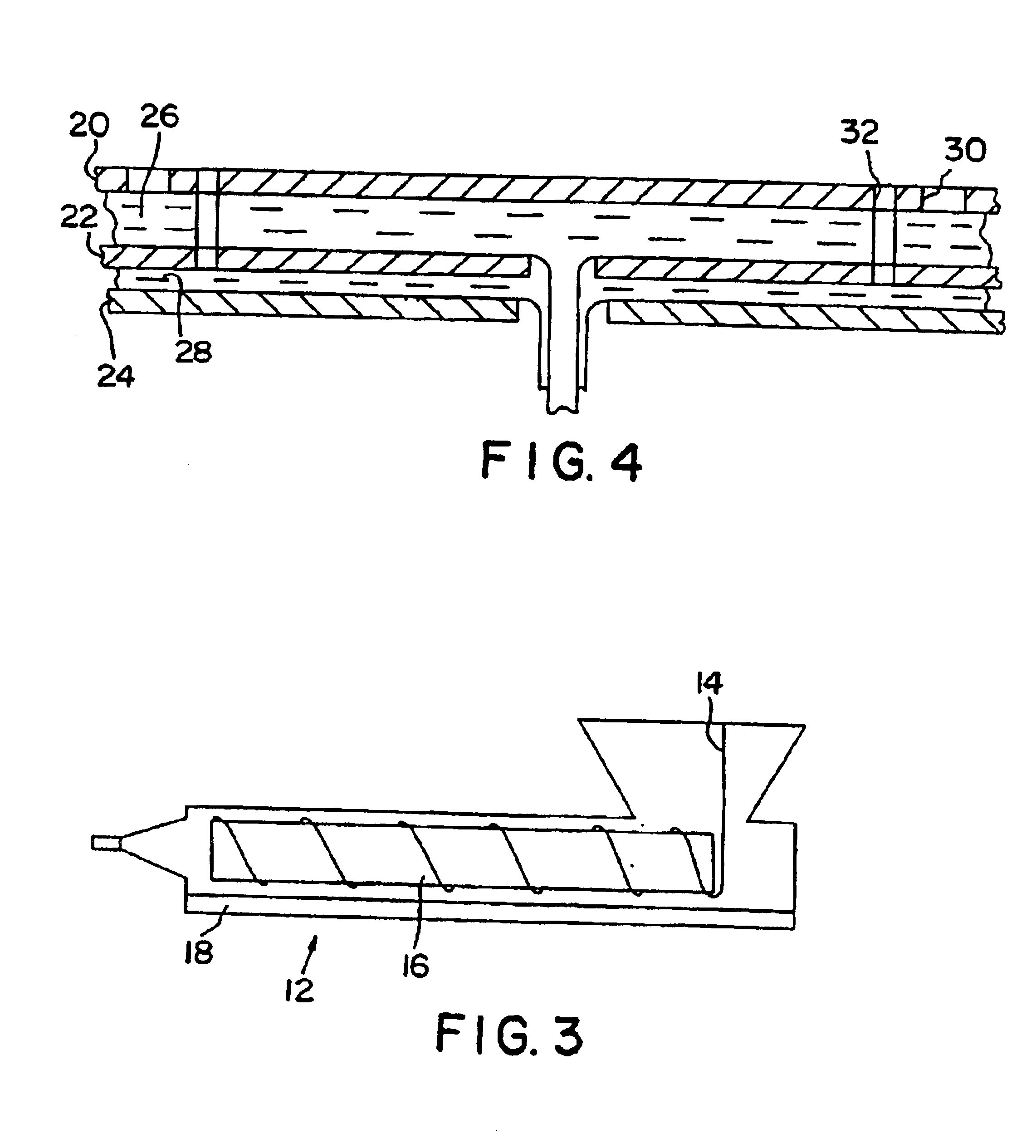Anti-microbial fiber and fibrous products
a fiber and antifungal technology, applied in the field of fibers, can solve the problems of compromising cell wall processes including basic transport processes, adverse environmental consequences, and wash-off or wear-off, and achieve the effect of being resistant to washing-off or wear-o
- Summary
- Abstract
- Description
- Claims
- Application Information
AI Technical Summary
Benefits of technology
Problems solved by technology
Method used
Image
Examples
second embodiment
FIGS. 1A-2 can also be used to describe a second embodiment grouping of practice of the invention.
The first configuration of the second embodiment of the present invention is a bi-component fiber of a core and a sheath as shown in FIG. 1A using PET or other high tenacity polymer in the core at between 20% and 80% by weight of the fiber. Poly 1,4 cyclohexylene dimethylene terephthalate (PCT) or other hydrolysis resistant polymer is used for the sheath at 80% to 20%. The core is designed to provide the strength of the fiber and the modulus can be varied to create a high modulus fiber with properties of high tenacity and low elongation similar to cotton, or a low tenacity and higher elongation fiber with properties similar to wool; or anywhere in between to obtain different fibers to make them as compatible as possible for their end uses and for any blend in which they will be used. In fibers, modulus refers to the area under the curve in a stress / strain curve. The sheath is preferably...
third embodiment
the invention is a mono-component of homo-polymer fiber made from low temperature polymers with a melting or softening temperature below 225° C. such as PETG. It relates to a binder fiber carrier for anti-microbial additives, which can be further blended with non-anti-microbial fibers to provide an anti-microbial finished fabric that is able to withstand significant wear and washings and maintain their effectiveness. The anti-microbial additives are inorganic.
A mono-component or homo-polymer fiber used in this embodiment was made from low temperature polymers with a melting or softening temperature below 225° C. such as PETG (PET modified with 1,4, cyclohexanedimthanol), PE, PP, co-PET, or amorphous PET. Another low melting temperature polymer which may be used is polycaprolactam (PCL). The anti-microbial additives are inorganic compounds made from metals such as copper, tin, zinc, silver, etc. The preferred compound is a zeolite of silver dispersed in PE, PET, or PBT before being a...
example 1
The anti-microbial fiber of the present invention was used in the making of a mattress pad. In this example, 15% of a 6.7 denier 76 mm cut length natural white fiber was used as a homofilament with zeolite of silver as the anti-microbial agent and 15% of a bi-component fiber was used together with 70% PET 6×3 T295 in a blend in which the zeolite of silver comprised 0.9% of the fiber. The blend of this fiber was made into a batt of about 1-1½″ thickness of nonwoven material which was then placed between two layers of woven fabric to form a mattress pad. When tested using the shake flask test this provided a 99.99% microbial kill ratio.
There are other examples in which all of the parameters of Example 1 were used and in each of which there was 15% of a bi-component fiber used. Again the zeolite of silver comprised 0.9% of the fiber. The percentage of the anti-microbial fiber ranged from 20% to 40% and the PET ranged from 45% to 65%. In all examples the microbial kill ratio was 99.99% ...
PUM
| Property | Measurement | Unit |
|---|---|---|
| lengths | aaaaa | aaaaa |
| thick | aaaaa | aaaaa |
| thick | aaaaa | aaaaa |
Abstract
Description
Claims
Application Information
 Login to View More
Login to View More - R&D
- Intellectual Property
- Life Sciences
- Materials
- Tech Scout
- Unparalleled Data Quality
- Higher Quality Content
- 60% Fewer Hallucinations
Browse by: Latest US Patents, China's latest patents, Technical Efficacy Thesaurus, Application Domain, Technology Topic, Popular Technical Reports.
© 2025 PatSnap. All rights reserved.Legal|Privacy policy|Modern Slavery Act Transparency Statement|Sitemap|About US| Contact US: help@patsnap.com



